Views: 1272
I bought a Korg i3 – broken – from ebay, the seller claimed it just stopped working. If that is true, usually the power rail is to blame. And in most cases it’s a dead capacitor. No big deal – usually.
The first board to come out is KLM-1631:
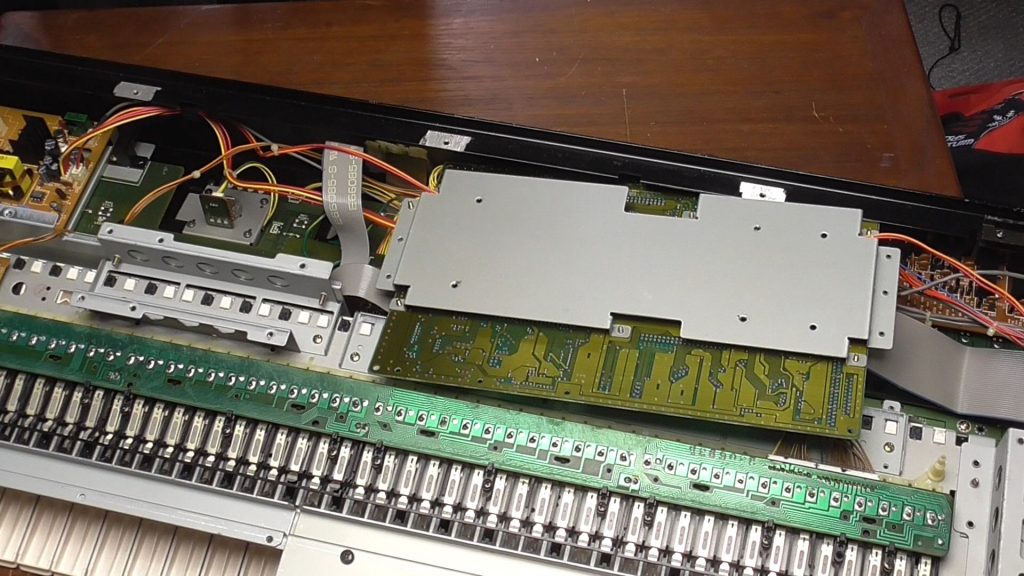
And a check on the components showed me that something let the magic smoke out – LC1. And it was right at the connector to the power supply:
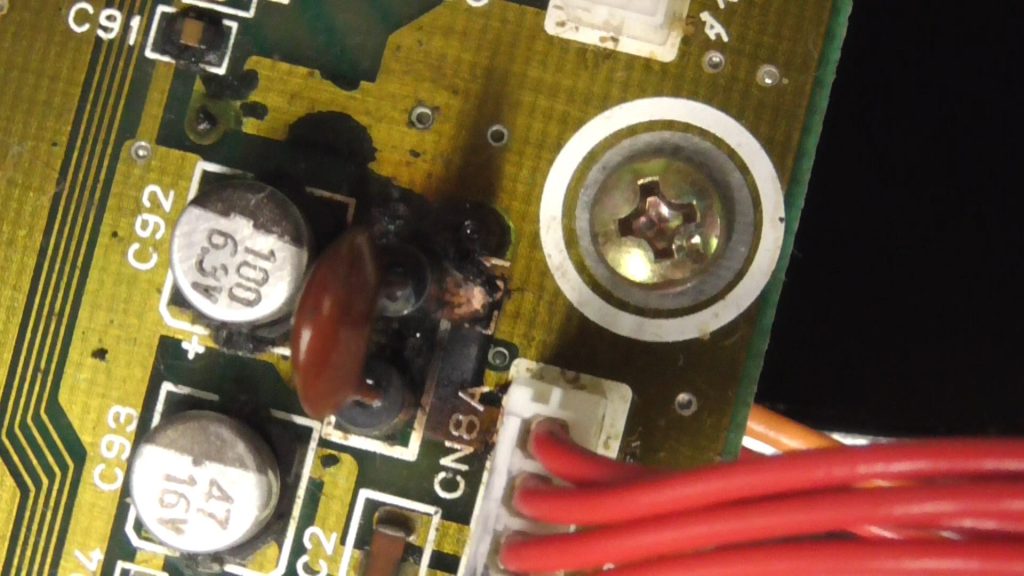
The power supply looked good, so I assumed this was the culprit.
According to the Service manual, LC1 is a DST310, a component I hadn’t seen before, but I had guessed right, a blown capacitor.
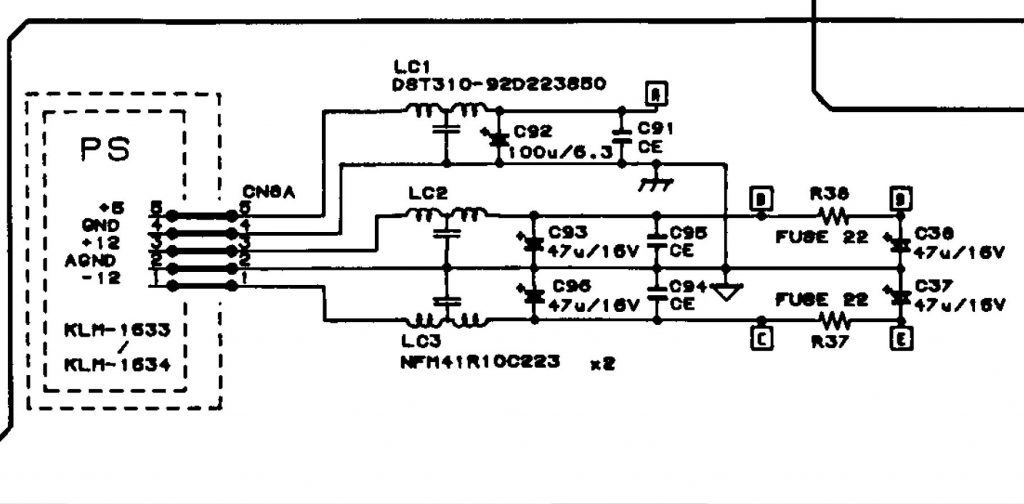

I don’t have these and couldn’t find a source – maybe these aren’t produced anymore? But it’s just a power filter, I could probably get away with just connecting CN8A-5 directly to the „A“ point. But having capacitive storage in a power rail is always a good thing. And since I’m already in there, I can do at least a decent job.
So I desoldered this LC1, cleaned the board and had to find the traces were eaten away. I additionally removed C92 as these capacitors were just in parallel. Also, maybe C92 was damaged by some surge – it was in the way and costs next to nothing. Only to find out that the trace going to C92 had left us as well.
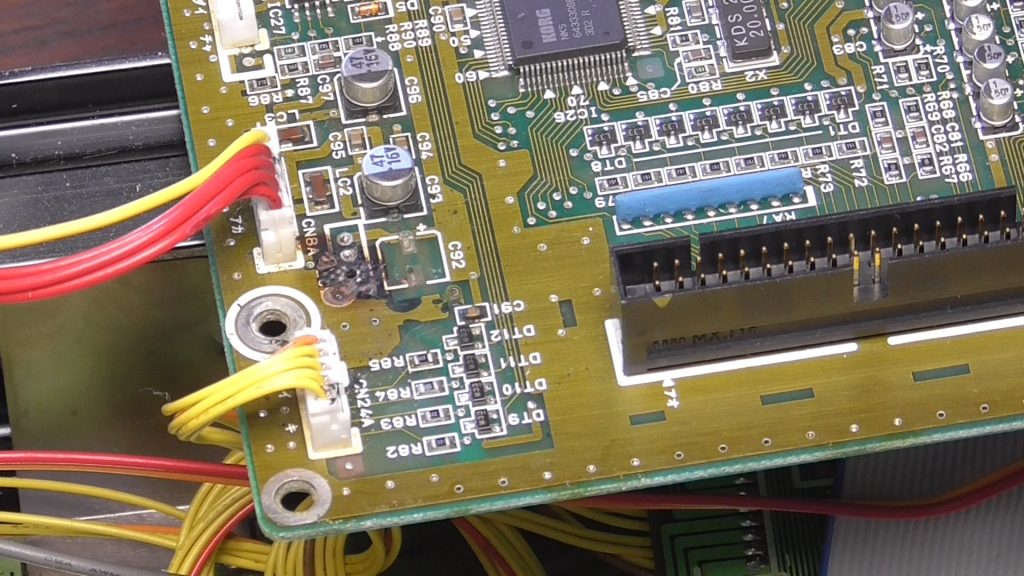
So, if in doubt – scream and shout. Uhm… these are buffer capacitors, so they just sit between plus and minus, both traces were large enough to just scratch the solder screen off and solder in capacitors. Again, I could probably have gotten away with just one, but the original schematic had two, so I used two:
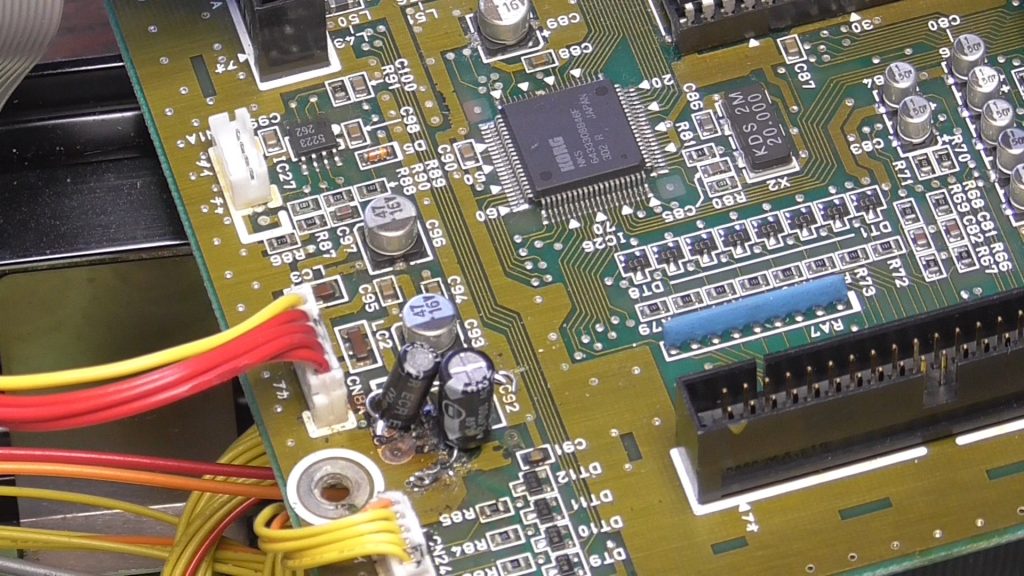
Yep, it’s ugly. Yep, I probably should have used a ceramic for the smaller one, but seriously, it is the 5V rail, quite likely this is the supply for the logic and won’t have any effect on the sound.
Starting up, it works:

So, I was right to assume a blasted capacitor in the power rail was to blame.
But, as Dr. House kept reminding us: people lie.
Next up: Repairing Power-On-Mute on an i3.